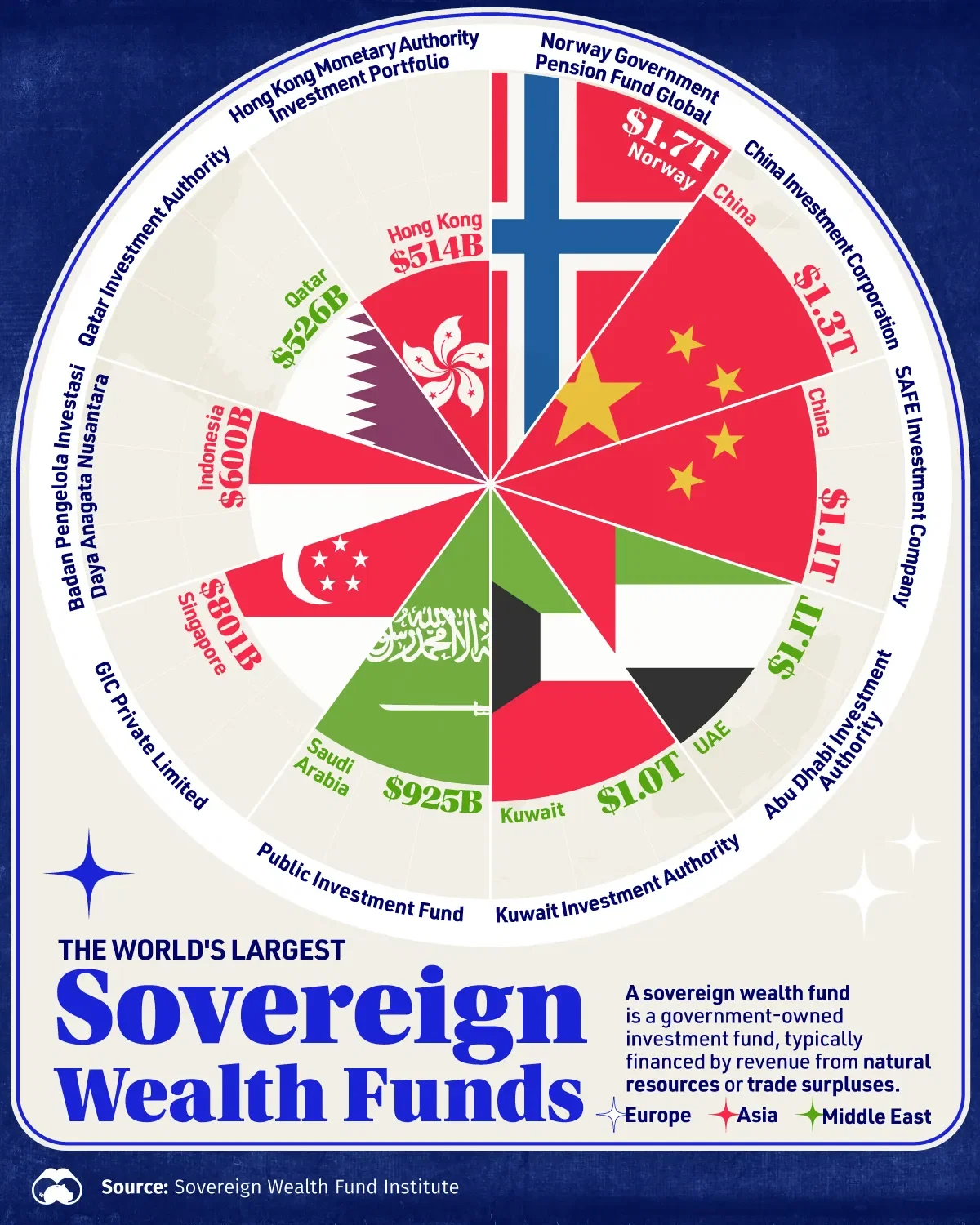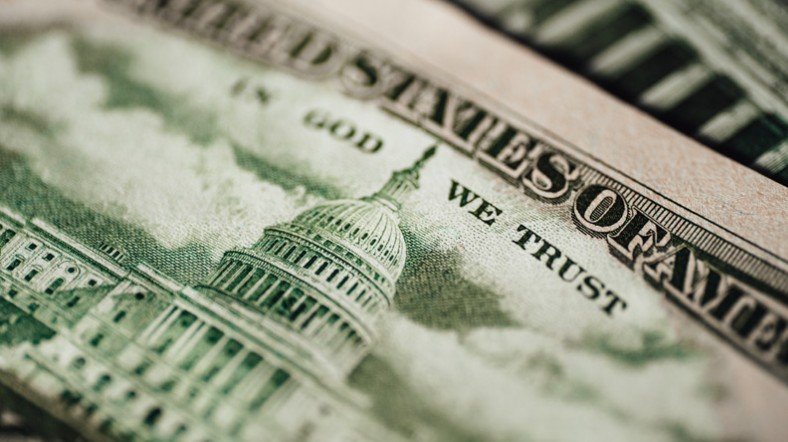A sovereign wealth fund (SWF) is a state-owned investment fund that a government uses to manage national assets, often derived from surplus revenues such as natural resource exports (like oil), foreign exchange reserves, or budget surpluses. These funds are typically invested in stocks, bonds, real estate, and other financial assets to generate long-term wealth and stabilize the economy.
Countries like Norway, China, and the UAE have large sovereign wealth funds funded primarily by oil revenues or trade surpluses. The U.S. does not currently have a national sovereign wealth fund, but some states, like Alaska, operate their own (e.g., the Alaska Permanent Fund). If Trump signed an executive order to create one, it would mark a major shift in U.S. financial strategy.

President Trump’s executive order on February 3, 2025, initiated the development of a U.S. sovereign wealth fund (SWF) aimed at enhancing national wealth and addressing economic challenges.
The Plan:
According to the White House Federal Register:
“The Secretary of the Treasury and the Secretary of Commerce shall jointly submit this plan to the President within 90 days of the date of this order. Such plan shall include recommendations for funding mechanisms, investment strategies, fund structure, and a governance model. The plan shall also include an evaluation of the legal considerations for establishing and managing such a fund, including any need for legislation.”
Funding Sources:
The administration has proposed several potential sources to finance the SWF:
Federal Assets: The U.S. government holds approximately $5.7 trillion in assets, including natural resource reserves, which could be leveraged to fund the SWF. (The Conference Board The White House+1)
Tariff Revenues: President Trump has suggested that revenues from tariffs could contribute to the fund.
(Reuters)
Public Land Sales: There are indications that selling public lands is being considered as a means to generate capital for the SWF.
(Center for American Progress)
Addressing the National Debt:
While the SWF aims to generate long-term wealth, its immediate impact on the $40 trillion national debt is uncertain. Critics argue that establishing such a fund might divert resources from direct debt reduction efforts. Some suggest that proceeds from federal assets should prioritize deficit reduction and tax reforms to stimulate private investment.
Cato Institute
Benefits for All Americans:
The administration envisions the SWF promoting economic growth and benefiting all citizens through:
Investments in National Projects: The fund could finance infrastructure, manufacturing, and medical research, potentially creating jobs and boosting the economy.
The Guardian
Economic Stabilization: A well-managed SWF might provide a cushion against economic downturns, supporting public services and social programs.
Potential Direct Benefits: If structured similarly to Alaska’s Permanent Fund, the SWF could offer direct financial benefits to citizens.
Tax Project
However, the effectiveness of these benefits depends on the fund’s management and governance. Concerns have been raised about transparency, ensuring that gains are equitably distributed, and potential mismanagement, among all Americans.
🏔️ How Alaska’s Permanent Fund Works
📌 Established in 1976
After the 1970s oil boom and the construction of the Trans-Alaska Pipeline, Alaskans voted to amend the state constitution to create the Alaska Permanent Fund (APF). The goal was to save a portion of oil revenues for long-term public benefit—instead of spending it all immediately.
💰 Funding Source
The fund is built primarily from royalties on oil production—by law, at least 25% of all oil royalties must be deposited into the fund.
Example: If the state receives $100 million from oil royalties, at least $25 million must go into the fund.
🧠 Managed by the Alaska Permanent Fund Corporation (APFC)
- It’s an independent, state-run entity.
- The fund is invested globally in stocks, bonds, real estate, and private equity.
- The principal (corpus) of the fund is protected and not spent.
- Only investment earnings are available for use.
💸 Annual Dividend to Citizens
- Since 1982, the fund has paid a Permanent Fund Dividend (PFD) to nearly every Alaska resident, including children.
- Eligibility: Must live in Alaska for at least 12 months.
- Average payout: Ranges year to year, usually between $1,000–$2,000 per person.
- The highest was over $2,000; the lowest was around $300 (in tight budget years).
- It’s taxable income on your federal return.
- A family of four might receive $6,000–$8,000 in a good year—basically a “people’s oil check.”
⚖️ Controversies and Challenges
- Budget shortfalls have led politicians to tap earnings to fund public services, sparking public backlash.
- There’s debate over whether the fund should continue paying dividends or focus more on balancing the state budget.
- It’s vulnerable to fluctuating oil prices and market conditions.
🤔 Why It Matters Nationally
- If Trump’s Sovereign Wealth Fund were to follow Alaska’s model:
- It could use resource-based revenues (like public land sales, mineral royalties, or oil/gas leases).
- It could pay dividends or public benefits directly to Americans.
- The challenge is scaling this model federally while dealing with debt and political gridlock.
🌍 Countries with Sovereign Wealth Funds

🇳🇴 Norway – Government Pension Fund Global
- Size: Over $1.5 trillion (largest SWF in the world)
- Source: Profits from North Sea oil and gas
- Purpose: Save for future generations, stabilize the economy
- Citizen Benefit: Indirect; helps fund social services and pensions
- Remarkable for: Transparency, ethical investing, and long-term sustainability
🇸🇬 Singapore – GIC & Temasek Holdings
- Size: Combined ~$1.2 trillion across both funds
- Source: Government surpluses, investment returns, and state-owned assets
- Purpose: Economic stability, national reserves, and wealth creation
- Citizen Benefit: Indirect; supports infrastructure, housing (e.g., HDB), and healthcare
- Notable: Uses a hybrid model mixing investment and domestic policy support
🇦🇪 United Arab Emirates – Abu Dhabi
- Investment Authority (ADIA)
- Size: Estimated $850 billion+
- Source: Oil exports
- Purpose: Diversify income beyond oil
- Citizen Benefit: Indirect through subsidies, infrastructure, and job creation
- Characteristic: Highly secretive, but influential in global finance
🇨🇳 China – China Investment Corporation (CIC)
- Size: ~$1.2 trillion
- Source: Foreign exchange reserves
- Purpose: Improve return on reserves, increase global influence
- Citizen Benefit: Indirect; strengthens national economic power
- Note: Strategic and politically guided investments, often controversial abroad
🇰🇼 Kuwait – Kuwait Investment Authority (KIA)
- Size: ~$800 billion
- Source: Oil revenue
- Purpose: Save for post-oil future, stabilize budgets
- Citizen Benefit: Indirect; supports strong welfare system and government spending
- Unique: Oldest sovereign wealth fund (established in 1953)
🇶🇦 Qatar – Qatar Investment Authority (QIA)
- Size: ~$500 billion
- Source: Oil and natural gas exports
- Purpose: Diversify the economy and increase global influence
- Citizen Benefit: Indirect; provides funding for infrastructure and global acquisitions
- Interesting Fact: Owns major global assets (e.g., Harrods, shares in Volkswagen)
🇷🇺 Russia – National Wealth Fund
- Size: ~$160 billion (as of 2024)
- Source: Oil and gas revenues
- Purpose: Pension support and economic stabilization
- Citizen Benefit: Helps balance federal budget and pension payouts
- Concern: Sanctions and geopolitical instability have limited performance
🇺🇸 Alaska – Alaska Permanent Fund
- Size: ~$75 billion
- Source: Oil royalties
- Purpose: Benefit future generations
- Citizen Benefit: Direct annual dividend to residents
- U.S. Relevance: Often cited as a model for a national fund

Written by Elizabeth Ann
🧠 Final Thoughts
Creating a U.S. sovereign wealth fund could be a transformative economic strategy—but only if it’s built with equity, transparency, and long-term vision. The risk is that it becomes another financial tool for the wealthy, or worse, a political slush fund backed by public assets.
For now, Americans should keep a close eye on how this proposal evolves—and demand accountability every step of the way. The Executive Order was signed on Feb. 3rd, the President ordered a plan within 90 days.
Ninety Days are up, so we should keep our eyes peeled for an update soon!!
2 Comments
Submit a Comment
Related Articles
Related
Judge Garnett Warns DOJ: Public Comments May Violate Court Rules in Mangione Case
New York, September 24, 2025 — In a scathing order issued today, U.S. District Judge Margaret M. Garnett ruled that officials at the Department of Justice may have breached court rules by making public statements about Luigi Mangione’s case — statements that defense...
Terrorism Charges Dropped for Luigi Mangione
On September 16, 2025, a New York judge (Gregory Carro) dismissed two terrorism‐related murder charges against Luigi Mangione. Specifically, the charges struck were: ➤First-degree murder in furtherance of terrorism under state law. ➤Second-degree murder as a crime of...
Why Karen Read’s $1.4M Prosecution Expense Is Justified
When Norfolk County released invoices showing that Karen Read’s second trial cost taxpayers more than $1.4 million, critics pounced. But is that number really excessive? Not when you compare it with other high-profile, expert-heavy prosecutions. Here’s why the expense...


I visited a lot of website but I conceive this one has something special in it in it
Hi, Neat post. There is a problem with your website in internet explorer, would test this… IE still is the market leader and a large portion of people will miss your great writing due to this problem.